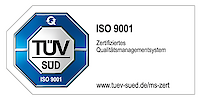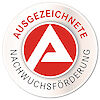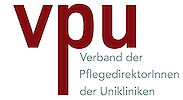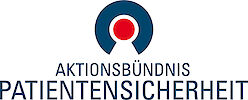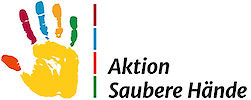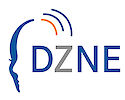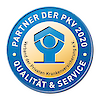Archiv
WHO CC Newsletter No. 22 - December 2013
Hygienic-technical factors and Legionella pneumophila in drinking-water installations | Up and down-water quality in Yaounde – notes from the field | Third MoP to the Protocol on Water and Health – a recognized instrument to promote human health | Atlas on Water and Health 2.0 | IWA Young Water Professionals Germany visit the WHOCC in Bonn | New Master's programme “Geography of Environmental Risk and Human Security”
Dear Reader,
Here we are, at the end of 2013, the International Year of Water Cooperation. The objective of the Year was to draw attention to the benefits of cooperation in water management. Cooperation in water management protects the environment, preserves water resources, creates economic benefits and promotes social and gender equality. Water knows no borders, and 148 countries share at least one trans-boundary river basin. Water cooperation also helps to generate security and build peace. The water cooperations in which I have been personally involved have seen an awesome development this year. While January started cold and quiet in Germany, the year ended with tropical heat in Cameroon. In the time between, our Collaborating Centre was re-designated, a large Legionella outbreak was noticed and surveyed, visitors were welcomed, field trips organized, projects were finished and others just started. Some people left us to work in different places and many new people entered my life.
Nelson, Thomas, Jaquie, Khalid, Louisa, Susanne, Daniel, Alex, Peggy, Andreas, Line, Clare, Esther, Katrin, Erick, Mary, Fred, Scott, Nicole, Peter, to name just a few. With some I only met up for a short while, but with others I was able to share more time and I am looking forward to whatever cooperation will develop in the future. Not all of them work in the field of water and risks, but for all of them water is an essential part of their life. They become aware of unusual rain patterns, provide hand-washing facilities for their customers, lack sufficient water supply at work or home and are exposed to floods. Despite all the risks, most of us enjoy water in our environment. Who doesn’t smile, when the first snow falls or the first rain begins at the end of dry season and a rainbow appears in the sky?
Whatever water event makes you smile, I hope there will be many of them in 2014, which is UN Year of Family Farming and Year of Crystallography.
Wishing all of you happy holidays and a peaceful start to 2014.
Andrea Rechenburg
Content
- Hygienic-technical factors and Legionella pneumophila in drinking-water installations
- Up and down-water quality in Yaounde – notes from the field
- Third MoP to the Protocol on Water and Health – a recognized instrument to promote human health
- Atlas on Water and Health 2.0
- IWA Young Water Professionals Germany visit the WHOCC in Bonn
- New Master's programme “Geography of Environmental Risk and Human Security”
Download
WHO CC Newsletter No. 22: high (pdf, 6.4 MB) / low (pdf, 1.2 MB)
WHO CC Newsletter No. 21 - July 2013
Participatory implementation of sanitation infrastructure in urban areas of north-central Namibia | Safe future use of the river Ruhr The Project „Sichere Ruhr“ | Productive treatment of faecal sludge: from waste to fodder and profits
Dear Reader,
Recently, I read an article on marketing basic water treatment and sanitation systems. The authors had spent a lot of time investigating ways to achieve behaviour change in populations and implementing new technologies successfully. Their argument that you need to give people a choice was striking. If you come with one type of technology/design, people will look at it, but they lack the opportunity to compare it with different, but similar technology. Giving a community different types of technology will result in discussions and people will think about why they prefer one solution over another. Finally, everyone will choose the technology and design that suits their personality and situation best, resulting in full acceptance. Sometimes they even end up with totally new ideas of what is needed and how it should be designed.
We base our decisions on the information available and the experiences we have gathered in life. The more information we use, the more carefully we usually decide. Encouraging people to think and discuss and providing access to information are key challenges nowadays. Sometimes this means people need to learn how to learn and overcome traditional hierarchical education systems. In other cases, the greatest hindrance is lack of access to information, which is often limited simply by lack of infrastructure, such as internet access.
Are you aware that UN Secretary-General, Ban Ki-moon has called for action to reach the Millennium Development Goals during the fewer than 1,000 days left until 2015? He called on the international community to re-energize efforts from governments to grass roots groups to make a difference. This should encourage us to exchange information on what we do and how we do it, in order to inspire more people to look into the fascinating field of water and risk. Have your say and don’t be afraid to re-think and question things. We are more than happy to receive comments on this issue and look forward to your feedback.
Andrea Rechenburg
Content
- Participatory implementation of sanitation infrastructure in urban areas of north-central Namibia
- Safe future use of the river Ruhr The Project „Sichere Ruhr“
- Productive treatment of faecal sludge: from waste to fodder and profits
Download
WHO CC Newsletter No. 21: high (pdf, 5 MB) / low (pdf, 1 MB)
WHO CC Newsletter No. 20 - July 2012
Towards an integrated concept for monitoring and improvements in water supply, sanitation and hygiene (WASH) in urban Mongolia | Groundwater Quality and Health in Yaoundé, Cameroon
Dear Reader,
We hope you enjoy reading this newsletter.
That‘s it!
Done!
Hmmm, you may ask yourself, what’s going on here? That‘s all? Where is the rest? This is not an editorial. Well, yes, you’re right. That would not be an editorial. That would be rather a polite phrase inviting you to read this year ́s summer issue of our newsletter. Okay, so let ́s put some more effort into raising interest in what is inside this issue. Do you know what a Mongolian ger is? How is this related to water and risk? Why are Germans working on gers? Want to know more? Start with our first article, which presents an overview of the IWRM MoMo project, which addresses water-related challenges in Darkhan. And what happens if an African Institute for Statistics sends out a staff member to train in Europe? In the case presented here, we got a Cameroonian-German project on groundwater quality up and running and started a new cooperative venture.
Just because people met, talked to each other and acknowledged that they would like to work together in a field of interest. You might add that it isn’t that easy: you meet and the project runs, and I agree. You’re right. You need to move from an idea to a proposal, find some funding, cope with all the administration bureaucracy, deal with people who sometimes look at researchers as if they were aliens, and then, finally, you can start working. And of course you need to take care that the new cooperation is cultivated and can grow. You need to spend time and effort on it, or you will never leave the fledgling stages. Sounds tough? Come on, let‘s look at the great opportunity new cooperative projects offer. We meet new people, exchange ideas, experience different cultures, expand our horizon and have fun. It resembles the Olympics, where athletes from around the world meet and compete for excellence. I hope that you enjoy viewing the Olympic games during the next few weeks and take a little bit of the Olympic spirit to your daily work.
Andrea Rechenburg
Content
Towards an integrated concept for monitoring and improvements in water supply, sanitation and hygiene (WASH) in urban Mongolia
Groundwater Quality and Health in Yaoundé, Cameroon
Download
WHO CC Newsletter No. 20: high (pdf, 4 MB) / low (pdf, 1.9 MB)
WHO CC Newsletter No. 19 - December 2011
Dynamic Modelling of Bathing Water Quality for Early Warning | Quality control of water and air in swimming pools | 2nd Meeting of the ECDC Expert Group on Climate Change | Water and Health – Where Science meets Policy“
Dear Reader,
Reading the articles in this newsletter made me re member my childhood. For many years my father took his daughters swimming at the weekend. My sisters and I learned to swim and we took our first jumps from the 1m block with him. At the swimming pool it was always nice and warm and especially in wintertime we enjoyed how the pool simulated summer. Later I went to lakes or rivers to enjoy water and exploring a beach in the summer was unbeatable. Were there risks? Of course! But as a child you often don‘t see them unless they are communicated clearly. It is easy to remember not to go swimming if the red flag is raised. It might be because of bad weather conditions, algal blooms, contamination or something else. No matter what it is, we know to just stick to the rule and lives will be saved. We often don’t know what happens behind the scenes. How much technology is needed to make a swimming pool run and make it safe to use? What does it take to move from different sorts of data to creating a model, to a warning mechanism protecting bathers at the seaside? And if this is not enough, there are always new threats popping up. How can we predict risks from climate-associated changes? Modeling risks is becoming more complex, so we need to predict the changes, prepare for them and develop adaptation mechanisms.
Regardless, all around the globe people enjoy recreational activities involving water. Water is naturally attractive to humans, making it difficult to resist. If there is a small puddle, children will start playing in it. It’s a simple source of happiness putting a smile on their faces. There is only one limit: One needs to have a little spare time. It is still the case that many children have to fetch drinking water far from their homes. They spend hours on this hard work and have no time for leisure. Increasing access to safe drinking water for all is still a challenge. Every effort being made in this field has to be highly appreciated as it allows more people to enjoy the beautiful aspects of water.
I hope that you find some time and enjoy reading this issue of the Water & Risk Newsletter.
Best wishes for 2012
Andrea Rechenburg
Content
- Dynamic Modelling of Bathing Water Quality for Early Warning
- Quality control of water and air in swimming pools
- 2nd Meeting of the ECDC Expert Group on Climate Change
- Water and Health – Where Science meets Policy“
Download
WHO CC Newsletter No. 19: high (pdf, 7 MB) / low (pdf, 1.6 MB)
WHO CC Newsletter No. 18 - August 2011
Ten years of collaboration with the WHO for health promoting water management | The spread of bacterial antibiotic resistance in the aquatic environment | Swimming pool water management | Universal Access to Water and Sanitation
Dear Reader,
The present volume of Water and Risk addresses issues that are well known, but remain unresolved, in addition to emerging issues. Perhaps the oldest challenge in preventive health care is to achieve universal access to safe water and hygienic sanitation. Although most of the
people in Western Europe have access to a continuous supply of safe water and hygienic disposal of waste in their homes, this is not the case for countries in the eastern part of the European region, where there is still a clear gap in physical access between urban and rural areas.
UNGA Resolution 64/292 recognizing the basic human right to water clearly distinguished four criteria that need to be fulfilled: physical availability, safety, economic accessibility and organoleptic acceptability. Resolution 15/L.14 of the Human Rights Council called on States to ensure the progressive realization of this human right. The Protocol on Water and Health is a unique European instrument linking sustainable use of water resources with the fight against water-related diseases. It came into force on 4 August, 2005 and currently benefits a population larger than that of the European Union, spread over twenty-four ratifying countries. Under the terms of the Protocol, countries set and report progress towards targets including universal access to safe water and hygienic sanitation. Furthermore, parties pay special attention to physical access in rural areas, under a programme led inter alia by the German Federal Environment Agency, UBA and develop best practice guidance on ensuring equitable access to safe water and hygienic sanitation, including access for the lowest income groups, in a programme led by France. These activities are closely coordinated with global WHO programmes, in particular the WHO/UNICEF Joint Monitoring Programme, which will, for the first time, assess physical access by income category in its 2012 report, and the UN Water Global Analysis and Assessment of Sanitation and Drinking Water (GLAAS).
The Protocol on Water and Health also pays special attention to the issue of safe recreational waters, in particular enclosed bathing environments such as swimming pools and spas. Following the very successful 4th International Conference on Swimming Pools and Spas (Porto, Portugal, March 2011), consultations are currently under way to strengthen existing guidelines by addressing new areas such as occupational health aspects for workers in an enclosed recreational water environment, health benefits of the use of recreational waters, and others. It is expected that this work, starting in the European region, will ultimately feed into the update of the global WHO recommendations for safe recreational water environments.
The WHO Collaborating Centre for Health Promoting Water Management and Risk Communication has played a key role in the development of the Protocol on Water and Health, and continues to support the work of the WHO, and we look forward to continuing mutually supportive and coordinated action in the future.
Roger Aertgeerts
WHO Regional Office for Europe Rome
Content
- Ten years of collaboration with the WHO for health promoting water management
- The spread of bacterial antibiotic resistance in the aquatic environment
- Swimming pool water management
- Universal Access to Water and Sanitation
Download
WHO CC Newsletter No. 18: high (pdf, 10 MB) / low (pdf, 1.6 MB)
WHO CC Newsletter No. 17 - December 2010
Safe water: is purity a paradox? | Case study of the application of Water Safety Plans in a school in Romania | PhD Student Workshop, Cannes Water Symposium June 29th - July 1st 2010 | IWA World Water Congress and Exhibition 2010 in Montréal
Dear Reader,
The year 2010 has afforded a milestone for the global discourse on water, sanitation and health, which has, at least to my impression, not yet been adequately appreciated: By a vote of 122 in favour to none against, with 41 abstentions, the UN General Assembly adopted a resolution introduced by Bolivia calling States and international organisations to provide financial resources, build capacity and transfer technology, in scaling up efforts to provide safe, clean, accessible and affordable drinking water and sanitation for all. On July 28, the UN declared the right to safe and clean drinking water and sanitation as a human right that is essential for the full enjoyment of life and all human rights! While representatives of some countries expressed reservations concerning the legal basis or suspected counterproductive interferences with the work going on in the Human Rights Council, others like Germany emphasised commonalities and invited delegations to support and participate actively in this “Geneva process”. Referring to the UN resolution, Roger Aertgeerts, WHO European Centre for Environment and Health, highlighted the outstanding significance of the Protocol on Water and Health to the Water Convention being the single legally binding international instrument in this field, during the 2nd Meeting of the Parties in Bucharest in November of this year. The challenge is now to turn the right into reality.
Our current newsletter comprises reflections and case studies of Paul Osborn about the strategy of the 300in6 initiative, which aims at enhancing existing or new activities in the field of water, sanitation and health. Furthermore you will find an interesting field report about the implementation of a Water Safety Plan in a Romanian school provided by Margriet Samwel from the lead organisation of this initiative, Women in Europe for a Common Future. As usual, the newsletter is completed by short reports from conferences and meetings as well as notices about events taking place in the next year.
We thank our contributors and our readership for their interest, encourage you to contribute to one of the future issues of ‘Water & Risk’, and wish you untroubled and peaceful Christmas days as well as health and success in 2011!
Thomas Kistemann
Content
- Safe water: is purity a paradox?
- Case study of the application of Water Safety Plans in a school in Romania
- PhD Student Workshop, Cannes Water Symposium June 29th - July 1st 2010
- IWA World Water Congress and Exhibition 2010 in Montréal
Download
WHO CC Newsletter No. 17: high (pdf, 10 MB) / low (pdf, 3 MB)
WHO CC Newsletter No. 16 - July 2010
Water Safety Plans for small-scale water supply systems in Romania | The Atlas of Water and Health | “Elephants and Butterflies on Moon” – My Internship in a NGO in Ouagadougou, Burkina Faso
Dear Reader,
a few days ago I received an email from a friend based in South Africa. She thoroughly enjoyed the recent football World Cup, but now the games are over and after a few weeks of amazing experiences with visitors from around the world, her world is coming back to reality again. This also means that the problems of daily life are becoming visible again and there is no longer a reason to escape from them. Just kilometres away from the wonderful stadiums extreme poverty exists at a level that threatens daily life. This includes poor sanitary conditions, often with open toilets surrounded by tin shelters. South Africa is still struggling with inadequate sewerage infrastructure and critical voices ask if the money invested in stadiums would have been better spent on infrastructure.
Nevertheless next to our doors we can also find backlogs in infrastructure provision and instead of pointing to others, we need to get involved in taking care of our own neighbourhoods. To do this, we need to obtain information about existing situations and find a way to get involved. Countless initiatives work on public participation. One example of this is the involvement of schools in water and sanitation projects. School projects can help to mobilize communities and to raise interest for neglected topics. The eyes of children look differently at our world and they often ask the right, although sometimes painful, questions. Similarly, our point of view can change when we encounter different cultures. What might look normal to us can be very strange for someone from a different cultural background. If we keep our eyes and minds open, we may gain new insights. Covering up problems does not solve them. Recognizing problems and opening them up to discussion means that we cannot neglect them anymore and paths to solutions open up.
I hope that you enjoy this edition of the newsletter, which includes reports on projects from Romania and Burkina Faso which underline the importance of public participation and a report on the Atlas of Water and Health, a newly developed tool to visualize water sanitation and health data.
Andrea Rechenburg
Content
Water Safety Plans for small-scale water supply systems in Romania
The Atlas of Water and Health
“Elephants and Butterflies on Moon” – My Internship in a NGO in Ouagadougou, Burkina Faso
Download
WHO CC Newsletter No. 16: high (pdf, 11 MB) / low (pdf, 1.7 MB)
WHO CC Newsletter No. 15 - December 2009
Water for Poor Urban Households: A study of Aligarh City, India. | Towards Microbiological Safety of Drinking Water in Central Asia: A NATO Science for Peace Project in the Republic of Uzbekistan and the Kyrgyz Republic | Crimean-Congo haemorrhagic fever – an outbreak in Herat Province, Afghanistan | 15 th International Symposium of the Health-Related Water Microbiology Group, 31 May - 5 June 2009 , Naxos, Greece | Cannes Water Symposium Workshop 30 June - 2 July 2009, Cannes, France | The 13 th International Symposium on Medical Geography (IMGS), McMaster University, 12-17 July 2009, Ontario, Canada
Dear Reader,
the end of the year is coming soon, and as every year Christmas is arriving sooner than expected. But once again, and although there have been major changes in the staff of the WHOCC (see page 13), we made it: we are happy to present you with the 15th volume of our WHOCC Newsletter and we would again like to give our warmest thanks to the authors for their highly interesting contributions. In the current issue, we focus on water and health problems in some Asian countries.
We invited Professor Abha Lakshmi Singh from the Aligarh Muslim University, India, to give us an insight into the water supply situation of poor urban households in Aligarh City. Water shortage affects one third of the Indian population and thus it is the biggest crisis India is facing today. “For the urban poor life is a living hell”, says Ms. Singh. Improvement of the water and sanitation infrastructure for the poor is therefore most urgently needed.
The Pasteur Institute in Lille, France is coordinating a project on the microbiological safety of drinking water in Uzbekistan and the Kyrgyz Republic. Dr. Dilorom Fayzieva from the Uzbek Academy of Sciences explains to us what the project, a follow-up to the French-Kyrgyz-Uzbek Micro Water Initiative, is all about. It is intended to establish ISO/WHO standards in the bacteriological analysis of drinking water.
Dr. Edith Fischnaller, chairwomen of the German NGO Cap Anamur takes us to Afghanistan, where as a consequence of the long-lasting war and the instable security situation the health system has substantial problems relating to the recognition, control and prevention of infectious disease outbreaks. The issue will be completed by short reports from several conferences which took place in 2009: the biennial symposium of the IWA Health-Related Water Microbiology Group, the Cannes Water Symposium, and the International Symposium on Medical Geography.
We look forward receiving your comments, encourage you to contribute to future “Water & Risk” newsletters and wish you a happy, healthy and successful 2010!
Thomas Kistemann
Content
Water for Poor Urban Households: A study of Aligarh City, India.
Towards Microbiological Safety of Drinking Water in Central Asia: A NATO Science for Peace Project in the Republic of Uzbekistan and the Kyrgyz Republic
Crimean-Congo haemorrhagic fever – an outbreak in Herat Province, Afghanistan
15 th International Symposium of the Health-Related Water Microbiology Group, 31 May - 5 June 2009 , Naxos, Greece
Cannes Water Symposium Workshop 30 June - 2 July 2009, Cannes, France
The 13 th International Symposium on Medical Geography (IMGS), McMaster University, 12-17 July 2009, Ontario, Canada
Download
WHO CC Newsletter No. 15: high (pdf, 12 MB) / low (pdf, 1.2 MB)
WHO CC Newsletter No. 14 - December 2008
Water, Sanitation & Hygiene, “WASH” Reduces Child Mortality | Behaviour Change Communication against Diarrhoeal Diseases in Rwanda: A Study on Knowledge, Attitudes and Practices | Water and Malaria Transmission in South Western Kenya | 13th International Congress on Infectious Diseases 19 - 22 June 2008, Kuala Lumpur, Malaysia | The View of a Young Water Professional at the 6th IWA Exhibition and Conference, 7 - 12 September 2008, Vienna, Austria | 2nd Annual Meeting of the Society of Hygiene, Environmental and Public Health Sciences, 1 - 4 October 2008, Graz, Austria | “We are fighting the same battle” – Report from the International Symposium: “Coupling Sustainable Sanitation and Groundwater Protection”, 14 - 17 October 2008, Hanover, Germany
Dear Reader,
The International Year of Sanitation and the International Year of the Potato have a great deal in common. The United Nations declared the year 2008 to be the International Year of Sanitation (IYS) and the International Year of the Potato (IYP), thereby bringing light to two hidden treasures. For decades sanitation has languished between sectoral approaches, taboos and political neglect. In a British Medical Journal online poll on the most important medical advances since 1840, sanitation was ranked first, surely qualifying it to be a treasure. It is likely that neither the two thirds of the global population who regard access to improved sanitation as normal, nor the one third lacking appropriate sanitation consider improved sanitation as a treasure. But doing so could make those who are lacking sanitation demand it and inspire politicians to promote it.
A key challenge in the future will be to ensure food security for the world‘s population, which is estimated to grow by more than 100 million additional people per year in the next few decades. More than 95 % of the increase will occur in low-income countries, where pressure on land and water is already intense. Protection of the natural resource base on which we all depend is essential. The potato, remarkable for both its adaptability and its nutritional value, is an option in helping to achieve food security in almost any habitat. The tuber provides starch, an essential dietary component, is rich in vitamin C, high in potassium and an excellent source of fibre. Potatoes are easy to grow and have the ability to provide more nutritious food more quickly and on less land than any other food crop. They are truly a treasure hidden by an ugly peel.
Sustainable sanitation can be seen as a link between these two treasures. Besides protecting and promoting human health, a sustainable sanitation system has to be economically viable, socially accepted and technically and institutionally appropriate. It protects the environment and natural resources and additionally offers the hygienic reuse of nutrients from human and animal excreta which can help to ensure future food security. The current issue of the Water & Risk Newsletter includes striking examples of contributions towards reaching MDG 7, Target 10 from the grass-roots up to the political level. During the IYS and IYP it became evident that enough knowledge and expertise already exists, ready to be shared, to tackle the lack of sanitation and to eliminate hunger and poverty. Implementing improved and sustainable sanitation and growing potatoes are simple and sustainable solutions to solve two major global problems and help meet the MDGs. The challenge for 2009 will be to build upon the political awareness gained as a result of the IYS and the IYP, to keep the treasures of sanitation and potatoes in the spotlight and to speed up efforts in reaching the 2015 goals.
Let’s go for it!
Susanne Herbst
Content
Water, Sanitation & Hygiene, “WASH” Reduces Child Mortality
Behaviour Change Communication against Diarrhoeal Diseases in Rwanda: A Study on Knowledge, Attitudes and Practices
Water and Malaria Transmission in South Western Kenya
13th International Congress on Infectious Diseases 19 - 22 June 2008, Kuala Lumpur, Malaysia
The View of a Young Water Professional at the 6th IWA Exhibition and Conference, 7 - 12 September 2008, Vienna, Austria
2nd Annual Meeting of the Society of Hygiene, Environmental and Public Health Sciences, 1 - 4 October 2008, Graz, Austria
“We are fighting the same battle” – Report from the International Symposium: “Coupling Sustainable Sanitation and Groundwater Protection”, 14 - 17 October 2008, Hanover, Germany
Download
WHO CC Newsletter No. 14: high (pdf, 14 MB) / low (pdf, 1.4 MB)
WHO CC Newsletter No. 13 - April 2008
Water and Health in Kyrgyzstan | Sustainable School Sanitation for Better Child Health in the EECCA and in the new EU Member States | The Evaluation of Acute Infantile Methemoglobinaemia Cases Generated by Well Water in Romania | The Investigation of Sanitation and Drinking Water in Rural Areas around Chengdu City, Sichuan Province, China | Workshop on Water Safety Plans (WSPs) 4 -5 December, 2007, Moscow, Russian Federation
Dear Reader,
We are happy to present you the next volume of our WHOCC Newsletter and would like to give our special thanks to the authors who made highly interesting contributions to this Newsletter. In the current issue, we invited Venera Djudemisheva of the Rural Water Supply and Sanitation Project to present an actual overview on aspects of Water and Health in Kyrgyzstan. Despite huge amounts of water resources in terms of ground water reservoirs, rivers and glaciers, the quality of water actually used for drinking and irrigation is still unsatisfactory in the country.
Margriet Samwel and Sascha Gabizon from Women in Europe for a Common Future present experiences with the use and perception of new sanitation concepts in schools of Romania and the Ukraine. Again in Romania, many children are exposed to Methemoglobinaemia and show the so-called “blue baby syndrome”. Anca Tudor and Mihaela Vasilescu from the Institute of Public Health in Bucharest have investigated the impact of nitrates and microbiological substances in well water with respect to the “blue baby syndrome”.
Tan Qinwen from the Environmental Monitoring Centre of Chengdu City, China reports about sanitation and drinking water aspects in rural areas around Chengdu City. Besides an extension of centralised water supply pipe networks to rural plains and hilly regions, the investigation points out that technical improvements – amongst others – are urgently needed for all small scale water supply projects in rural areas.
This issue will be completed by a short report from Dr Alexander Vereschagin, Chief Physician of the Federal Centre of Hygiene & Epidemiology of Rospotrebnadzor, Moscow, about the Workshop on Water Safety Plans, which took place from 4 - 5 December 2007 in Moscow, Russian Federation. The Workshop was held within the framework of the Biennial Collaborative Agreement (BCA) between the World Health Organization (WHO) and the Ministry of Health and Social Development of Russian Federation.
We thank our contributors and our readership for their interest and encourage you to contribute to one of the future issues of ‘Water & Risk’.
Thomas Kistemann
Content
Water and Health in Kyrgyzstan
Sustainable School Sanitation for Better Child Health in the EECCA and in the new EU Member States
The Evaluation of Acute Infantile Methemoglobinaemia Cases Generated by Well Water in Romania
The Investigation of Sanitation and Drinking Water in Rural Areas around Chengdu City, Sichuan Province, China
Workshop on Water Safety Plans (WSPs) 4 -5 December, 2007, Moscow, Russian Federation
Download
WHO CC Newsletter No. 13: high (pdf, 11 MB) / low (pdf, 1.5 MB)
WHO CC Newsletter No. 12 - December 2007
The Use of Water Safety Plans in Epidemiological Studies | Impacts of Inadequate Sanitation and Unsafe Drinking Water on Human Health: A Case Study of Kigali City, the Capital of Rwanda | Quantifying the Microbiological Loads from Point Sources and Diffuse Pollution in a Small River Catchment in Germany | The 12th International Medical Geography Symposium in Bonn
Dear Reader,
We are happy to send you our WHOCC Newsletter just before the end of 2007.
In the current issue, we invited Ian Lake from the University of East Anglia to highlight the benefits of Water Safety Plans for epidemiological studies. Study limitations due to the lack of suitable water quality monitoring data can be overcome using risk-based measures of drinking water exposure, the principles of which are similar to those of Water Safety Plans. In Rwanda, the rate of access to safe drinking-water is still unsatisfactory, not only in rural areas, but even in the fast growing capital, Kigali City. Eugene Dusingizumuremyi from the Kigali Institute of Science and Technology has investigated the impact of inadequate sanitation and unsafe drinking water on human health and concludes that water-related diseases substantially handicap the development of Kigali City. The Institute for Hygiene and Public Health recently concluded a study on microbial loads from diffuse sources in a small river catchment. Esther Rind, Christiane Franke and Andrea Rechenburg compare these results with the impact of municipal wastewater and combined sewage overflow.
The newsletter is once again completed by short reports from several conferences and meetings: Andrea Rechenburg and Christiane Franke visited the biennial symposium of the IWA specialist group on health-related water microbiology in Tokyo in September 2007; Yvonne Walz reports from the Annual Meeting of the German Working Group of Medical Geography in Bayreuth in October 2007; and Oksana Krämling shares her impressions with us of the 12th International Medical Geography Symposium, which was hosted by our Institute in July 2007.
We wish our readership untroubled and peaceful Christmas days as well as health and success in 2008!
Thomas Kistemann
Content
The Use of Water Safety Plans in Epidemiological Studies
Impacts of Inadequate Sanitation and Unsafe Drinking Water on Human Health: A Case Study of Kigali City, the Capital of Rwanda
Quantifying the Microbiological Loads from Point Sources and Diffuse Pollution in a Small River Catchment in Germany
The 12th International Medical Geography Symposium in Bonn
Download
WHO CC Newsletter No. 12: high (pdf, 9 MB) / low (pdf, 1.5 MB)
WHO CC Newsletter No. 11 - July 2007
Water and Health in Uzbekistan | Perfluorinated surfactants in surface and drinking waters | ECDC Workshop on Infectious Diseases and Environmental Change | Latest facts on water, wastewater and waste – German tasks in the global topic
Dear Reader,
we wish to thank the ‘Water & Risk’ readership for the positive and encouraging responses that we have received about the new layout of our newsletter. The editorial team has taken these comments into consideration to further improve the attractiveness, convenience, and topicality of this publication.In the current issue, we invited our colleague Dilorom Fayzieva from the Uzbek Institute of Water Problems in Tashkent to report on water resources and their contamination as well as about human access to water and sanitation and major water-related health problems in her home country. Uzbekistan is a large and populous, but landlocked country in Central Asia and its water problems are inextricably related to the widely reported Aral Sea disaster.
The contamination of surface water bodies and, subsequently, drinking water with perfluorinated surfactants has gained much attention in Germany during the last year. With their investigations and publications, Dirk Skutlarek and Harald Färber from our institute have provoked an emotional national debate about perfluorinated surfactants and the health consequences for the population at risk, mainly in the densely populated Ruhr area. In our newsletter, they present a review of their current findings.
The newsletter is completed by short reports from four conferences, workshops and meetings: Christiane Franke visited the ‘Essener Tagung’ on Water, Wastewater and Waste in Aachen in March 2007; Yvonne Walz represented our WHOCC at a symposium on the occasion of the designation of the new WHOCC for Housing and Health in Stuttgart in March 2007; a workshop on infectious diseases and environmental change was held at the headquarters of the European Centre for Disease Prevention and Control in Stockholm, where our WHOCC was invited to represent views on the water-related health impact of environmental change. Finally, a brief reference is made to the International Conference Towards Sustainable Global Health’, which was held in Bonn in May 2007.
Once again, we look forward receiving your comments and encourage you to contribute to one of the future issues of ‘Water & Risk’.
Thomas Kistemann
Content
Water and Health in Uzbekistan
Perfluorinated surfactants in surface and drinking waters
ECDC Workshop on Infectious Diseases and Environmental Change
Latest facts on water, wastewater and waste – German tasks in the global topic
Download
WHO CC Newsletter No. 11: high (pdf, 7 MB) / low (pdf, 1.5 MB)
WHO CC Newsletter No. 10 - December 2006
Water and Health: Struggling for survival in a South Indian Megacity | A new approach to analyse water-related vulnerability in megacities: Delhi Case study | ECOSAN – recycling-oriented wastewater management and sanitation systems | Integrated approaches to supply and disposal systems | Water, Sanitation, Health and the MDGs
Dear Reader,
thanks to our new layout team, the WHO CC newsletter has changed its name and appearance. With issue No. 10, and after the first five years of publication, “WaMRi” has become "Water & Risk” – to be more convenient, more focused, and more appealing to our readership.
For the current issue, we invited several young colleagues to share with us their water & sanitation field experiences in India. We encourage you to follow Thomas Seyler, Patrick Sakdapolrak and Reena Singh to their PhD projects in Chennai and Delhi. Christine Werner brings us insights into the engagement of GTZ in “ecological sanitation”, a new paradigm in recycling-orientated wastewater ma-nagement, and highlights the implementation of pilot projects in different parts of the world. Reports from two conferences complete the newsletter: Andrea Rechenburg presents different disposal concepts from the Decentralized Infrastructure Conference (Aachen/Germany), and Susanne Herbst reflects on her impressions from the IWA World Water Congress (Beijing/China) on water, sanitation, health and the Millennium Development Goals.
We look forward receiving your comments, encourage you to contribute to future “Water & Risk” newsletters, and wish you a happy and successful 2007!
Thomas Kistemann
Content
- Water and Health: Struggling for survival in a South Indian Megacity
- A new approach to analyse water-related vulnerability in megacities: Delhi Case study
- ECOSAN – recycling-oriented wastewater management and sanitation systems
- Integrated approaches to supply and disposal systems
- Water, Sanitation, Health and the MDGs
Download
WHO CC Newsletter No. 10: high (pdf, 9 MB) / low (pdf, 1.5 MB
WHO CC Newsletter No. 9 - February 2006
The Protocol on Water and Health | River Swist in North Rhine-Westphalia as an example for microbial load of watercourses due to diffuse polluters – an interim result | News from the Aral Sea Basin Water and Food Conference
Dear Reader,
The Protocol on Water and Health to the 1992 Convention on the Protection and Use of Transboundary Watercourses and International Lakes finally entered into force. On 4th August 2005 it became legally binding for the 16 ratifying countries. It is the first major international legal approach for prevention, control and reduction of water-related diseases in Europe. Please read more about it in our first contribution of the WaMRi-Newsletter. This issue also deals with the project Swist III, focussed on River Swist in North Rhine-Westphalia as an example for microbial load of watercourses due to diffuse polluters. The report from the Aral Sea Basin Water and Food Conference summarizes its main findings entitled as “Managing Water and Food Quality in Central Asia” which took place in Almaty, Kazakhstan, on 1-2 September 2005.
Content
- The Protocol on Water and Health
- River Swist in North Rhine-Westphalia as an example for microbial load of watercourses due to diffuse polluters – an interim result
- News from the Aral Sea Basin Water and Food Conference
Download
WHO CC Newsletter No. 9: high (pdf, 2 MB)
WHO CC Newsletter No. 8 - August 2005
The Global Water System Project | A GIS-based Water Safety Plan as an instrument of risk management in German catchment areas | Report on the 3. International EcoSan Conference
Dear Reader,
water is the most essential resource for life on earth, it is crucial for relieving poverty, hunger and disease and critical for economic development (UN Department of Technical Cooperation for Development). Due to inequitable use, pollution, deforestation, desertification and climate change, water is becoming the most acute limiting factor to socioeconomic development. The lack of drinking water is the most serious global problem of humankind and the main cause of conflicts among countries. At present, more than 1 billion people have no access to safe drinking water. Against the background of a constantly growing world population, the coverage of an increasing need of freshwater for the future is the biggest challenge worldwide. The United Nations forecast that in 20 years, 3.4 billion people will live in countries with water shortage. Therefore, an effective water management and the supply with safe drinking water are of high importance not only in water scarce regions, but also in industrialised countries.
This issue of the WaMRi-Newsletter deals with an international project focussed on the global water system, provides information on the possibilities and areas of GIS application in the framework of the WHO Water Safety Plan and summarizes the main findings of the ECOSAN Conference, which took place in Durban, South Africa, in May this year.
Content
- The Global Water System Project
- A GIS-based Water Safety Plan as an instrument of risk management in German catchment areas
- Report on the 3. International EcoSan Conference
Download
WHO CC Newsletter No. 8: high (pdf, 0.9 MB)
WHO CC Newsletter No. 7 - December 2004
Global climate change and waterborne diseases | HACCP in Slovenia | Facts and impressions from the 4th World Water Congress and Exhibition
Dear Reader,
since the first edition of our WaMRi-Newsletter in March 2002, we have experienced a continuing augmentation of our readership all over the world. As a result, we receive more and more comments and contributions to our Newsletter. Based on this development, we decided to promote a bidirectional interaction, in which we would like to integrate your ideas and news in the fields of water management, water & health and risk communication. For that, we encouraged you in October to make contributions to our newsletter. Please feel free to make further contributions (see contact-address at the end of this newsletter).
We hope you will find this new concept appealing and inspiring for your work / reading interest.
Content
- Global climate change and waterborne diseases
- HACCP in Slovenia
- Facts and impressions from the 4th World Water Congress and Exhibition
Download
WHO CC Newsletter No. 7: high (pdf, 0.2 MB)
WHO CC Newsletter No. 6 - June 2004
Drinking water supply in the rural area of the Mekong Delta, Vietnam | The Protocol on Water and Health (“London-Protocol”) in the context of international environmental policy | Sustainable waste water management in rural areas? The Project Lambertsmill
Content
- Drinking water supply in the rural area of the Mekong Delta, Vietnam
- The Protocol on Water and Health (“London-Protocol”) in the context of international environmental policy
- Sustainable waste water management in rural areas? The Project Lambertsmill
Download
WHO CC Newsletter No. 6: high (pdf, 0.5 MB)
WHO CC Newsletter No. 5 - December 2003
A report of the Bishop Shannahan Hospital in Nsukka, Nigeria | Recent and future projects
Content
- A report of the Bishop Shannahan Hospital in Nsukka, Nigeria
- Recent and future projects
Download
WHO CC Newsletter No. 5: high (pdf, 0.3 MB)
WHO CC Newsletter No. 4 - September 2003
Occurrence of antibiotics in hospital wastewater, municipal wastewater and surface waters | Recent and future projects
Content
- Occurrence of antibiotics in hospital wastewater, municipal wastewater and surface waters
- Recent and future projects
Download
WHO CC Newsletter No. 4: high (pdf, 0.1 MB)
WHO CC Newsletter No. 3 - April 2003
Topic: Review about the ”Occurrence of Pathogens in Surface Water” | Tuberculosis in poorer countries
Content
- Topic: Review about the ”Occurrence of Pathogens in Surface Water”
- Tuberculosis in poorer countries
Download
WHO CC Newsletter No. 3: high (pdf, 0.1 MB)
WHO CC Newsletter No. 2 - October 2002
Legionella in technical systems | Recent projects of the WHO CC
Content
- Legionella in technical systems
- Recent projects of the WHO CC
Download
WHO CC Newsletter No. 2: high (pdf, 0.2 MB)
WHO CC Newsletter No. 1 - March 2002
Recent and future projects
Health for All, this is the ambitious proclamation of the World Health Organization (WHO). The HFA response to accelerated global change and to ensure that individuals, countries and organizations are prepared to meet the challenges of the 21st Century. In order to improve global health, the process includes extensive consultation with a wide range of partners for health, comprising governmental and non-governmental organisations, the private sector, the United Nations, etc. One essential task of the WHO is to promote and conduct research in the field of health. It was recognized that collaboration with national institutions and laboratories would be an optimal way to realize WHO policies and programmes.
Over the decades, the WHO developed a global network of collaborating centres (CC), which is being updated continuously. In Germany, there are about 41 WHO-CCs which provide their expertise in various research fields.
In May 2001, the Institute for Hygiene and Public Health of the University of Bonn was designated WHO CC for Health Promoting Water Management and Risk Communication (WaMRi). The Institute has got a long tradition in water hygiene. Since 1905 it has been the Municipal and State Investigation Office for Water Hygiene. In 1994 Professor Dr. Martin Exner became Director of the Institute. 60 people work at the institute 50% of which belong to the scientific staff. They work in the research fields of water microbiology, water chemistry, hygiene of technical systems, hospital hygiene, surveillance of nosocomi infections, Public Health and Medical Geography, environmental mycology, testing of disinfectants, etc.
With regard to the terms of reference the work of the WHO-CC focuses upon normative and regulative work including the revision of the Guidelines for Drinking Water Quality and the London Protocol on Water and Health to the 1992 Convention on the Protection and Use of Transboundar Watercourses and International Lakes. The activities of the WHO-CC comprise the elaboration of holistic water management concepts including HACCP and GIS, Surveillance of water-related diseases, communication of health risks, technical guidance documentation (Legionella in drinking water installation systems, water supply in health care facilities, outbreak and incident management), group training and liaison with WHO regional and country offices, particularly the European Centre for Environment and Health (ECEH).
Our intention of the WaMRi-Newsletter is to give an overview about recent and future projects of the WHO CC, interesting internet links and references, upcoming global events in the field of water management and risk communication and research results. We will publish it several times a year and would be glad if we reached an interested community in the field of water research. Also we would appreciate any contributions and comments to the newsletter to fulfil our task to disseminate important aspects of health promoting water management and risk communication.
Content
- Recent and future projects
Download
WHO CC Newsletter No. 1: high (pdf, 0.3 MB)




